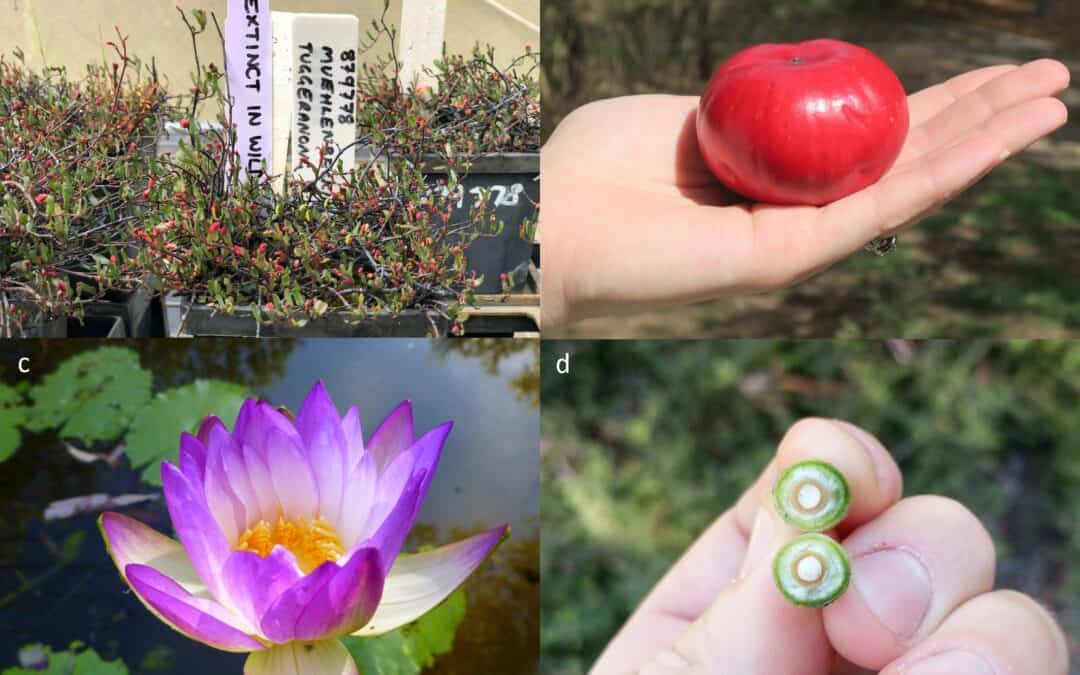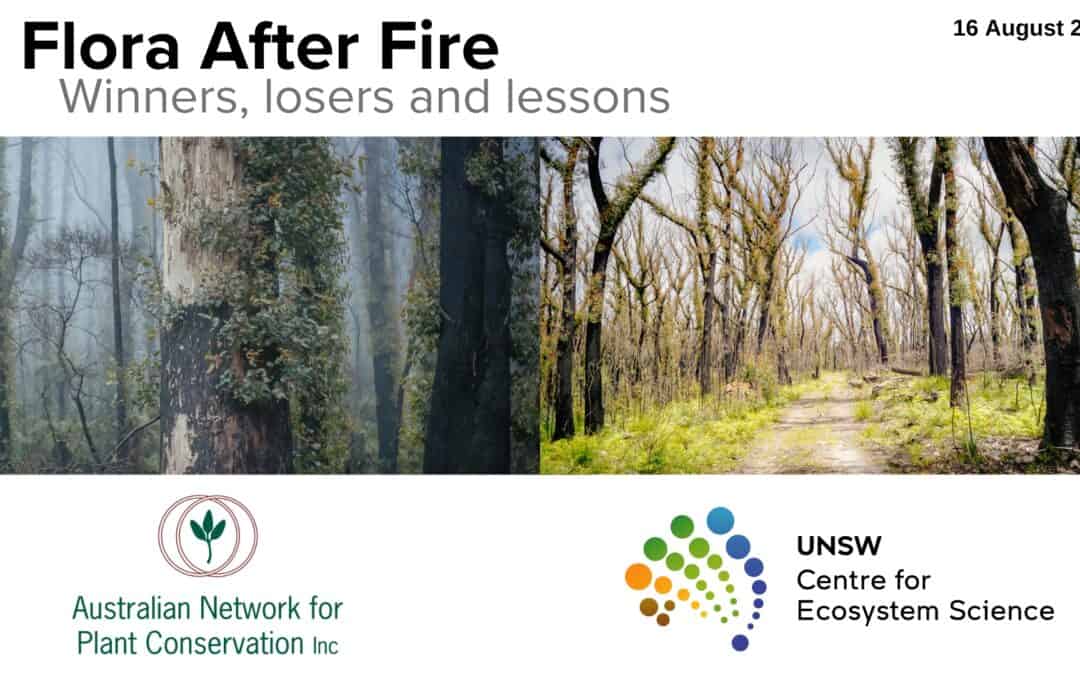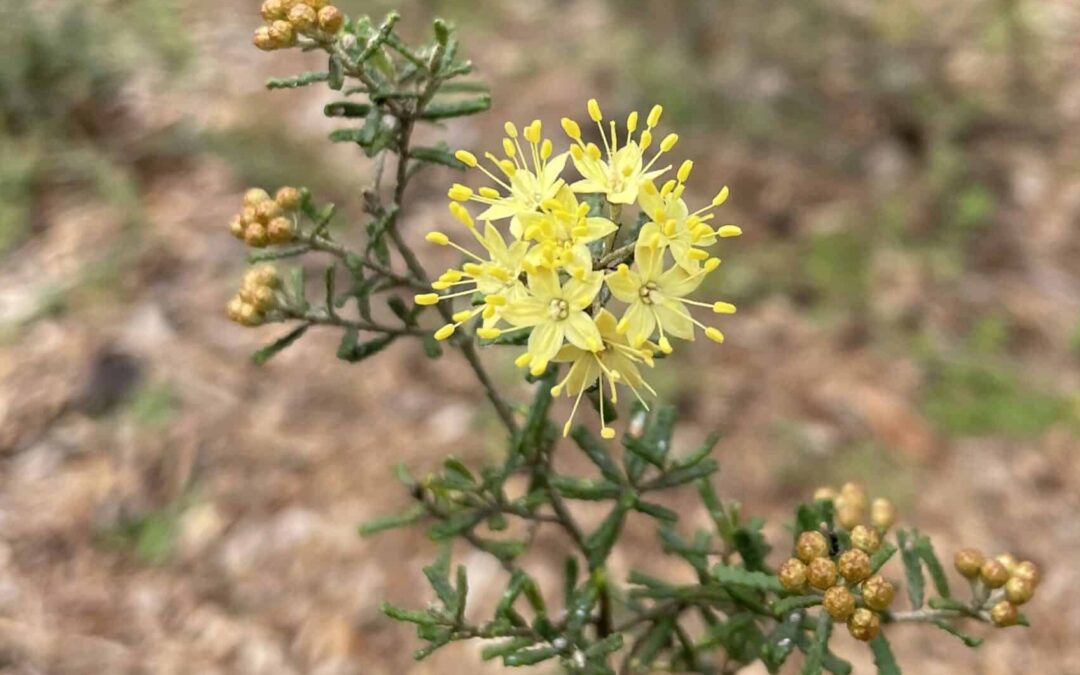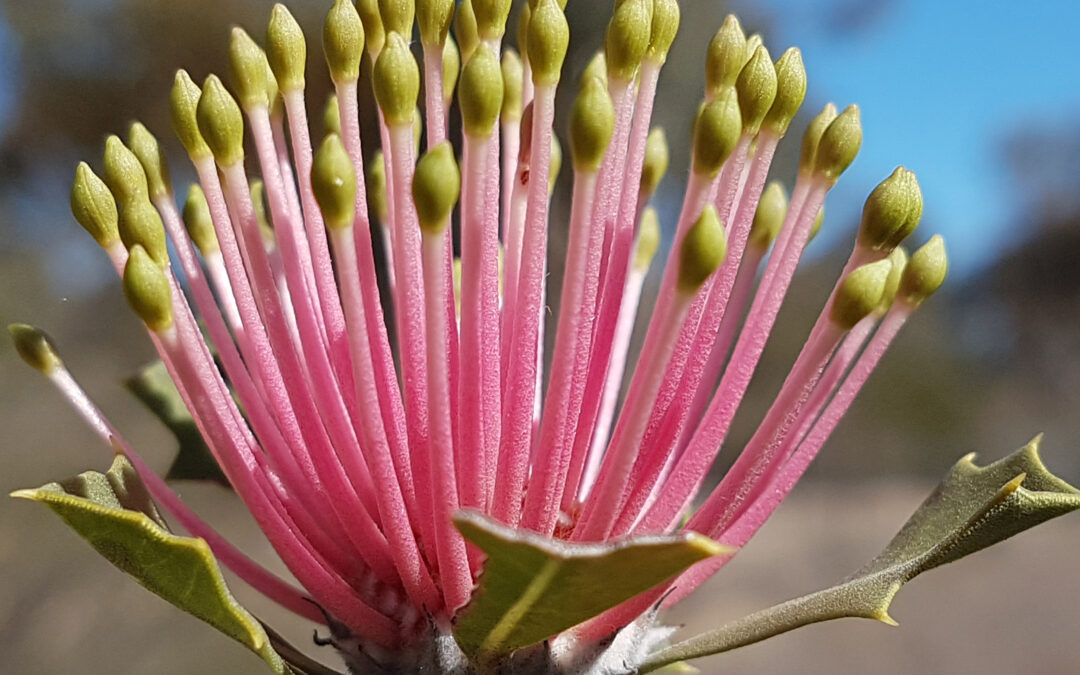
Sep 15, 2023 | News
 Conservation seedbanks maintain collections of many seed-bearing plant species, providing propagation material and data to support management of wild populations. But some plant species produce seeds that are difficult to collect, dry, store and utilise; collectively recognised as ‘exceptional’ species.
Conservation seedbanks maintain collections of many seed-bearing plant species, providing propagation material and data to support management of wild populations. But some plant species produce seeds that are difficult to collect, dry, store and utilise; collectively recognised as ‘exceptional’ species.
In this paper recently published by ANPC, Australian Seed Bank Partnership, and their collaborators in the journal Plants, People, Planet, we test a framework for identifying exceptional species within the Australian flora.
Our expert working group document examples and case studies for each ‘Exceptionality Factor’. We also want to make it easier for conservation practitioners to recognise exceptional species and work around the challenges they present, so the paper includes a workflow that may be used to identify additional exceptional species, and direct efforts to establish appropriate collection types.
Read the paper here: Ex situ germplasm collections of exceptional species are a vital part of the conservation of Australia’s national plant treasures
This work was co-authored by researchers from The Botanic Gardens of Sydney, Australian National Botanic Gardens, Kings Park and Botanic Garden, the Western Australia Seed Centre, WA Parks and Wildlife Service, CSIRO, The University of WA, Alcoa Australia, and the Australian Academy of Science.

Sep 7, 2023 | News
Recordings are now available for the ‘FLORA AFTER FIRE – winners, losers and lessons‘ online symposium held on Wednesday 16 August in collaboration with the Centre for Ecosystem Science, UNSW. Watch the presentations on Youtube HERE
The presentations cover the following three themes, with a special emphasis on Black Summer impacts and recovery
– plant and fire relationships
– impacts and observations (case studies)
– lessons and actions moving forward

Sep 22, 2023 | News
Previously recorded throughout much of the Mallee region of western Victoria, the Mallee Phebalium, Phebalium glandulosum subsp. macrocalyx is now restricted to a few small populations south west of Swan Hill in north-western Victoria. There may be as few as 50 plants left in the wild in Victoria, and as such it is listed as Critically Endangered in Victoria under the Flora and Fauna Guarantee Act. The Mallee Phebalium is one of 24 threatened species that scientists and horticulture staff at the RBGV are working to protect as part of the Preventing the extinction of Victoria’s threatened flora project.
This small to medium shrub has small bright yellow flowers and prominently glandular leaves that are aromatic when crushed. Many species of Phebalium are grown as garden plants, however cultivation is generally by cuttings, as seeds are very difficult to germinate due to physical or chemical dormancy mechanisms. We currently do not know how to germinate the Mallee Phebalium, so part of the work by the RBGV will be collecting seeds and running germination trials to try to figure out how to make them grow. Seeds will then be placed in long-term storage in the Victorian Conservation Seedbank and plants grown in a living collection at the RGBV to insure against loss of this species in the wild.
This research is funded by DEECA Victoria’s Nature Fund. The ‘Preventing the extinction of Victoria’s threatened flora’ project is led by Royal Botanic Gardens Victoria in partnership with La Trobe University, Australian Network for Plant Conservation, DEECA, Trust for Nature, ENVITE, Bairnsdale & District Field Naturalists Club, Friends of the Grampians Gariwerd, Wimmera CMA, Nillumbik Shire, Halls Gap Botanic Gardens and the Australasian Native Orchid Society Victorian Branch.
Article Image: Mallee Phebalium (Phebalium glandulosum subsp. macrocalyx) – Photo credit: Andre Messina

Sep 15, 2023 | Events Category
Beyond the Guidelines: designing resilient, persistent plant translocations.
This workshop was held on 16 November 2023 as part of the 3rd International Conservation Translocation Conference held in Fremantle, Western Australia.
It focused on aspects of planning and practice that can improve the likelihood of establishing healthy, resilient and recruiting plant populations, that will persist over the long term. The talks included practical examples of sourcing seed or other germplasm types, selecting recipient sites (macro and microsites), post planting management techniques and genetic health assessments. They also addressed creation of populations that are resilient to disturbance. The sessions covered the following 3 themes:
– pre-translocation
– planting
– post-translocation.
Download the flyer and program here
Recordings from the workshop are available on the ANPC Youtube channel here

Download or purchase the ANPC’s Translocation Guidelines here

Conservation seedbanks maintain collections of many seed-bearing plant species, providing propagation material and data to support management of wild populations. But some plant species produce seeds that are difficult to collect, dry, store and utilise; collectively recognised as ‘exceptional’ species.




